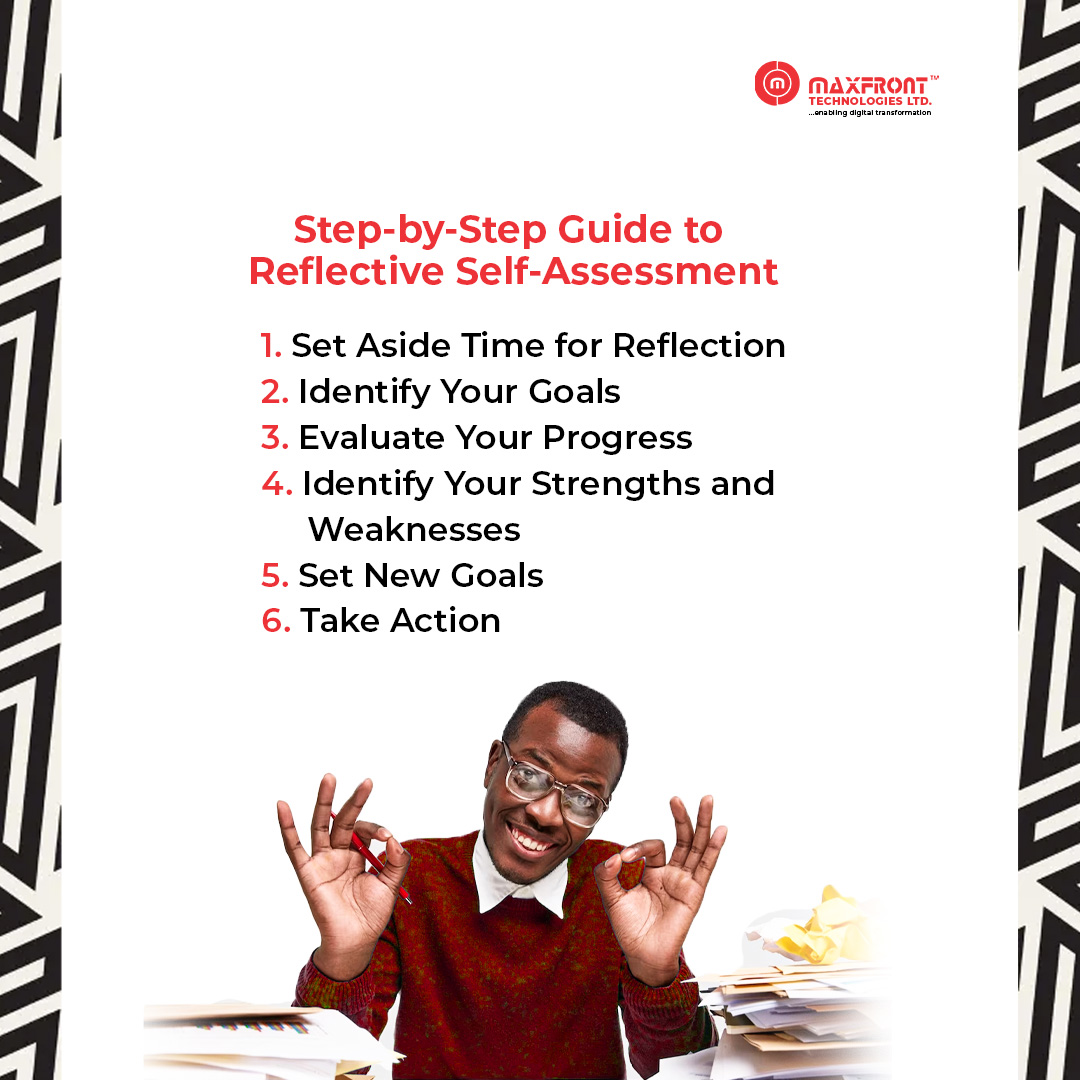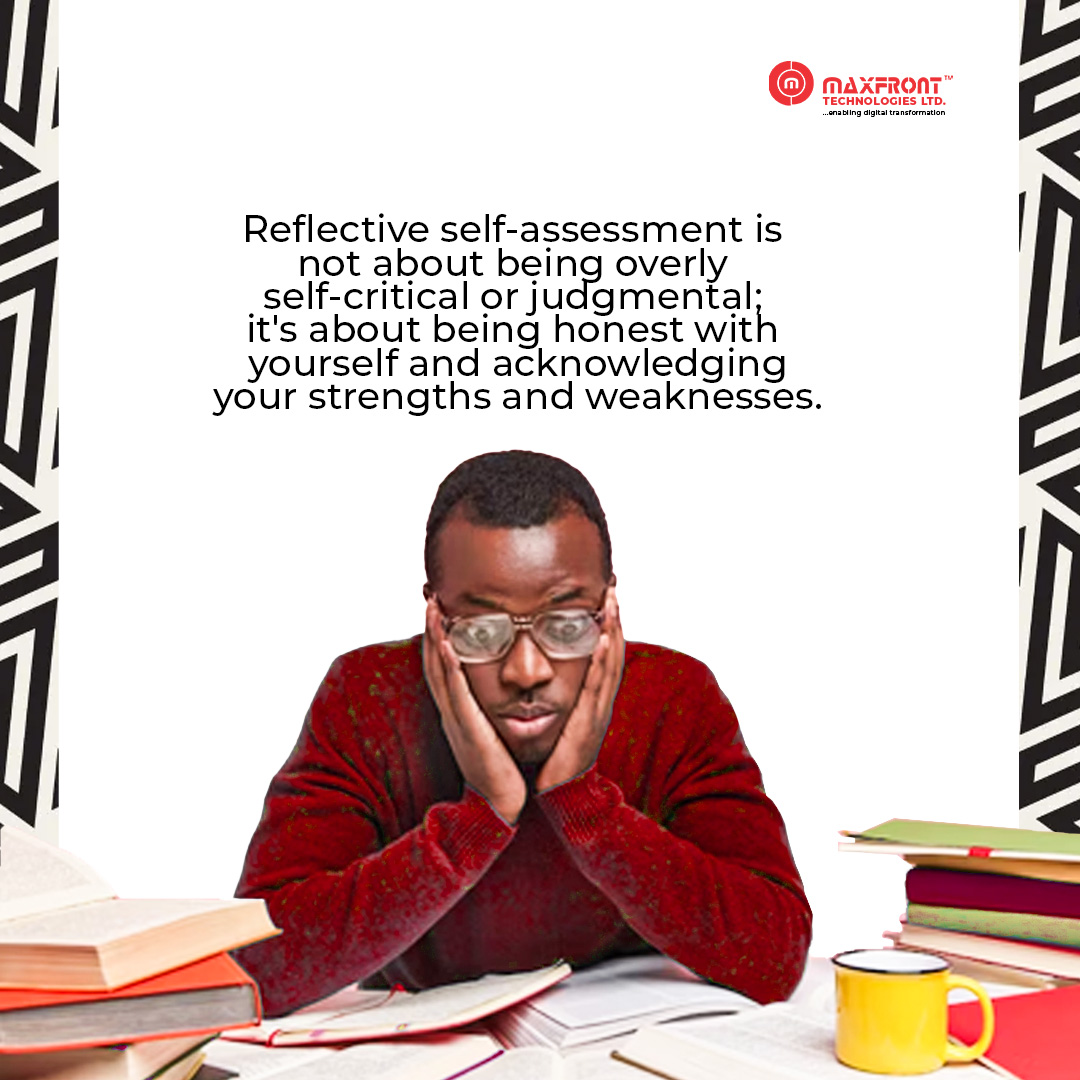Life is a journey, and personal growth is an essential part of that journey. To live a fulfilling life, we must continually strive to grow and improve ourselves. Self-assessment is a powerful tool that helps us to evaluate our progress, identify our strengths and weaknesses, and make the necessary adjustments to achieve our goals.
In this blog post, we’ll explore the concept of reflective self-assessment and provide a step-by-step guide to help you evaluate your personal growth. We’ll also offer tips on overcoming potential challenges, tracking progress over time, and making meaningful improvements.
What is Reflective Self-Assessment?
Reflective self-assessment is looking inward and examining one’s thoughts, feelings, and behaviors. It involves taking a critical look at yourself to identify areas where you are doing well and areas where you need to improve. Reflective self-assessment is not about being overly self-critical or judgmental; it’s about being honest with yourself and acknowledging your strengths and weaknesses.
Step-by-Step Guide to Reflective Self-Assessment

1. Set Aside Time for Reflection
To conduct a reflective self-assessment, you must set aside time to reflect on your experiences, thoughts, and feelings. Find a quiet place to be alone with your thoughts, and make sure you won’t be disturbed.
2. Identify Your Goals
Reflective self-assessment requires a clear understanding of your goals. Take some time to reflect on what you want to achieve in life, and write down your goals. Ensure your goals are specific, measurable, achievable, relevant, and time-bound.
3. Evaluate Your Progress
Once you have identified your goals, evaluate your progress toward achieving them. Reflect on your actions and determine whether they are helping you move closer to your goals. Identify the areas where you have made progress and celebrate your successes.
4. Identify Your Strengths and Weaknesses
Reflective self-assessment requires you to be honest about your strengths and weaknesses. Identify the things you are good at and what you need to work on. Don’t be too hard on yourself; be honest about areas you need to improve.
5. Set New Goals
After identifying your strengths and weaknesses, set new goals to help you address areas you need to improve. Ensure your new goals are specific, measurable, achievable, relevant, and time-bound—set milestones to help you track your progress.
6. Take Action
Reflective self-assessment is only valuable if you use it to make positive changes in your life. Take action to address the areas where you need to improve and celebrate your successes along the way.
Benefits of Reflective Self-Assessment
- Improved self-awareness: Reflective self-assessment can help individuals better understand their thoughts, feelings, and behaviors. By becoming more self-aware, individuals can identify their strengths and weaknesses and make changes to improve themselves.
- Enhanced problem-solving skills: Reflective self-assessment can help individuals develop better problem-solving skills. By reflecting on past experiences and analyzing them, individuals can identify what worked and what didn’t and apply those insights to future situations.
- Increased confidence: Reflective self-assessment can help individuals become more confident in their abilities. Recognizing their strengths and successes makes individuals feel more confident and motivated to take on new challenges.
- Better decision-making: Reflective self-assessment can help individuals make better decisions. By reflecting on past decisions and analyzing the outcomes, individuals can identify what worked and what didn’t and use that information to make more informed decisions in the future.
- Improved relationships: Reflective self-assessment can help individuals improve their relationships with others. By reflecting on their behaviour and communication style, individuals can identify areas for improvement and make changes to build stronger, more positive relationships.
Reflective self-assessment can be a powerful tool for personal and professional growth but can also present challenges. To overcome potential challenges, it is important, to be honest with yourself, stay open-minded, practice self-compassion, seek support, set realistic goals, and take action. Identifying concrete steps to improve oneself and following through on those steps is essential.

Conclusion
Reflective self-assessment examines your thoughts, feelings, and actions to gain insight and improve your personal and professional growth. It is a powerful tool to help you evaluate your personal growth and achieve your goals. It requires honesty, self-awareness, and a willingness to take action. Following the step-by-step guide outlined in this blog post, you can conduct a reflective self-assessment and make positive changes in your life. Remember, personal growth is a journey, and reflective self-assessment is an essential part of that journey.